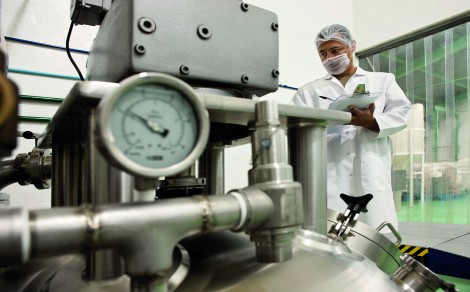Reducing leaks – saving energy

Pipework leaks are the cause of many a headache for plant managers tasked with optimising compressed air system performance. While they may not cause any immediate health and safety concerns, escalating energy costs mean this is an issue that cannot be ignored.
With over 20% of total compressed air consumption potentially lost through leaks on average, Vanda Jones, Executive Director from the British Compressed Air Society (BCAS), explains why they’re an important consideration, and how to take steps to reduce wastage.
The current climate means we’re much more aware of energy consumption and the costly effects of leaking air. Just one 2mm hole in your pipework could cost over £1249 per year in wasted energy, and so it’s more important than ever to take measures to reduce air leaks. In this latest update from BCAS, we will outine some effective ways to prevent leaks.
Let’s first start with the source of the leak. There a four common leak sources to be aware of, these include:
Air-using equipment left running when not needed
Manual condensate drain valves left open
Leaking hoses and couplings
Leaking pipes and pipe joints
It’s important to check these areas regularly, as leaks need to be monitored constantly. We would suggest carrying out a leak survey at least twice a year, so you keep on top of any changes in the system
Under pressure
When pressure drops in the system, the generating pressure is set much higher than necessary. To resolve this issue, start by identifying where the pressure drop originates and take action to fix the cause and regulate the pressure.
The issue of a drop in pressure could be due to:
Leaks
System component constrictions (e.g. valves, bends)
Undersized piping
Pipework installation (e.g. no ring main)
Identify the leak
As air leaks aren’t hazardous to health and safety, it’s easy to become complacent if there is a small leak. However, even a small leak can have significant effects on energy usage, so it’s important to act quickly.
To reduce leaks, we suggest conducting an out-of-hours survey where you can walk the site listening for any leaks – it should be easy to hear any leaks when the site is quiet.
Following the survey, we would recommend implementing a leak management programme. This way you can mark the leaks, record them on a site plan, and grade the priorities, such as fixing the largest leak first.
Finally, encourage users to report leaks so they can be identified and repaired as soon as possible.
Pressure reduction
Once you’ve identified any leaks and repaired them, then it’s time to speak to your supplier about reducing the generation pressure at the compressor. Understanding the system pressure is critical when it comes to leakage reduction and reducing energy usage.
Fixing a leak will increase the pressure of air. This can not only have an impact on your system but also put your projected savings at risk.
The pressure drop should be less than 10% of the compressor’s discharge pressure, as measured from the compressor outlet to the point of use.
If one section of the plant required much lower pressure, we would suggest running a dedicated low-pressure compressor or to regulate the pressure down that line. It’s important to not generate higher pressure than is required.
When it comes to the energy used, on average it is found that for every 1 bar g additional generation pressure there is a loss of 7% in specific energy. And so, keeping pressure low can help to reduce your operating costs.
Zone out
The design and installation of the pipework can help with saving energy and so when considering leak reduction measures, it’s important to consider the pipework currently in place.
Here we’ve outlined some of examples of how you can change the pipework to be more efficient:
Spilt the system into zones and pressurise each as required
Remove or isolate redundant piping
Use vales to isolate parts of the distribution network
Select large radius bends instead of elbows
Support piping to minimise movement and sagging to reduce leaks and buildup of fluid
When looking at the pipework network remember not all parts of the network operate to the same hours or pressure and so it’s possible to save energy by zoning the compressed air system.
By implementing these tips, you can significantly reduce the potential for energy wastage from your compressed air system. Reducing leaks can benefit both your energy bills and the environment by lowering emissions. It’s a real win-win situation!
For more information, please speak to a BCAS member who can assist in this area by emailing enquiries@bcas.org.uk. And to download a free copy of the leakfixing guide vist:
Contact BCAS at Tel: 020 7935 2464 e-mail: info@bcas.org.uk website: www.bcas.org.uk
https://www.linkedin.com/company/british-compressed-air-society/
-
SMART Manufacturing & Engineering Week
04 - 05 June, 2025
NEC, Birmingham UK -
PPMA 2025
23 September, 2025, 9:30 - 25 September, 2025, 16:00
NEC, Birmingham UK -
Advanced Engineering Show 2025
29 October, 2025, 9:00 - 30 October, 2025, 16:00
NEC, Birmingham UK










